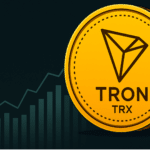August marked a challenging month for decentralised finance (DeFi) protocols, as the fees they generated fell by 24% compared to the previous month. The total fees amounted to $288 million, the lowest figure recorded since February. This decline has sparked discussions in the crypto community, with various factors being considered as contributors to this downturn.
Decline in August Fees
The $288 million in fees generated by DeFi protocols in August was a significant reduction from July’s $381.45 million. This drop is even more striking when compared to March, which saw fees reach $494.14 million. The last time fees were this low was in February when the total was $265.18 million. Uniswap, one of the leading decentralised exchanges, led the way in fee generation with over $85.44 million. Despite this, the overall market trend was downward, affecting even top performers like Uniswap.

Lido Tops August Earnings
Lido emerged as the highest-earning DeFi protocol in August, accumulating $76.18 million in fees. However, this figure represents a decline from earlier in the year when Lido generated $115.28 million in March. Other protocols like Uniswap, Jito, and PancakeSwap also saw their fee earnings fall, with Uniswap earning $49.6 million, Jito $31.98 million, and PancakeSwap $27.34 million. Even though Lido maintained its top position, earning $1.97 million in fees in the past 24 hours alone, the general trend for Lido and other DeFi protocols has been downward since March.
Changing Trader Preferences
Nick Ruck, a market researcher, offered some insight into the reasons behind the drop in DeFi fees. “The lower fees this month are due to the lower return from DeFi protocols. As APRs from liquid restacking tokens have fallen, more traders are moving their money into memecoins, which is affecting the DeFi market,” Ruck noted.
This shift towards memecoins suggests that traders are exploring different opportunities, possibly in response to the declining returns offered by DeFi protocols. This change in investment behaviour appears to be one of the factors contributing to the reduced fee generation in August.
Threshold’s Merger Proposal
In the midst of these market changes, Threshold, a Bitcoin DeFi protocol, has proposed merging its BTC wrapper token, tBTC, with Wrapped Bitcoin (WBTC). This proposal, currently under discussion in Threshold’s governance forum, aims to secure WBTC as changes in the management of BTC wrappers are anticipated.

Wrapped Bitcoin (WBTC) is a prominent Bitcoin wrapper with a market capitalisation of approximately $6 billion. These tokens are ERC-20 compliant and backed by Bitcoin, allowing for the integration of BTC into Ethereum-based applications. The proposed merger between tBTC and WBTC is seen as a move to ensure stability in the use of Bitcoin-backed tokens as the DeFi landscape continues to evolve.
The Final Word: An Evolving Market
The DeFi sector is clearly going through a period of transition, as indicated by the drop in fees during August. While key protocols like Uniswap and Lido continue to generate significant fees, the overall decrease suggests that the market is facing new challenges.
Threshold’s proposal to merge its BTC wrapper with WBTC is an example of how protocols are attempting to adapt to these changes and maintain confidence in the ecosystem. As traders explore other investment avenues and DeFi protocols adjust their strategies, the direction of the DeFi market will be closely watched in the coming months.
In conclusion, the decline in DeFi fees in August reflects broader shifts within the cryptocurrency market. With reduced returns from DeFi protocols and a noticeable move towards memecoins, trader behaviour is evolving, influencing the financial performance of these platforms. The proposed merger by Threshold is one of several responses to these shifts, highlighting the ongoing adjustments within the DeFi space. As the market continues to change, the future of DeFi will depend on how these protocols navigate the current landscape and whether they can regain the momentum seen earlier in the year.





















